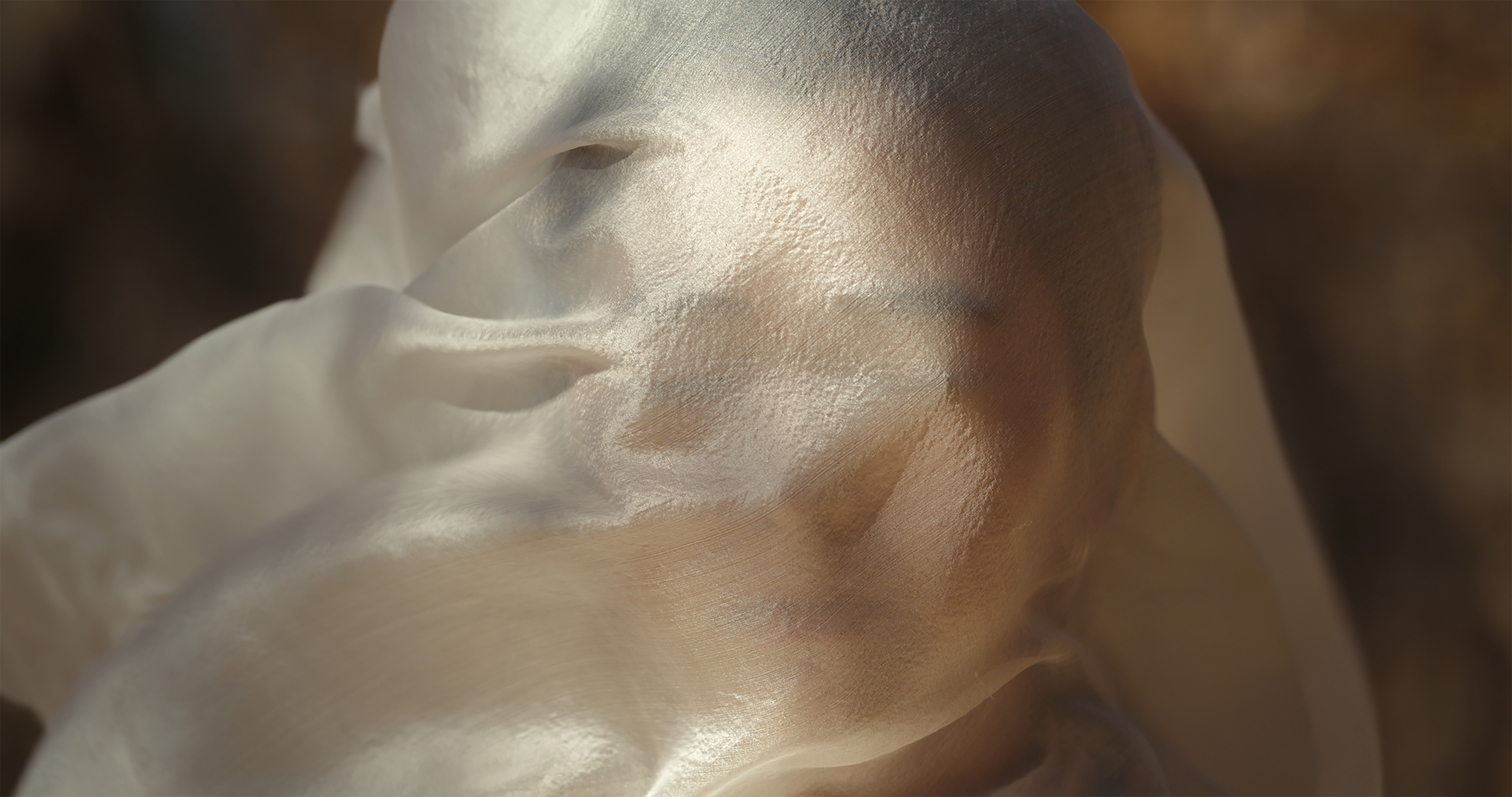Saodat Ismailova

Saodat Ismailova's collage evokes Lady Tuesday –locally known as Bibi Seshanbe– a customary blessing ritual from Central Asia. An ancient, syncretic female deity, she is considered a protector of women and has the power to bless; enhance fertility, and tell one’s fortune. As the saint of weavers and embroidery makers, she also holds particular significance in transmission of crafts. This newly produced work brings together these ideas by digitally collaging visual elements referring to the ritual on ikat, a dyeing technique used to pattern textiles. In Uzbekistan, Bibi Seshanbe's three-day long ritual, performed in a small circle, involves collective cooking, candle making, drumming, and storytelling. The story, narrated by women and girls only, is in many ways reminiscent of the Cinderella fairytale, in which Bibi Seshanbe would be playing the role of the fairy godmother.
In The Letters (2014–2019), Ismailova combines family portraits with handwritten texts by the people featured. The series maps her family lineage, starting with her great-great-grandmother and ending with her daughter. The version included in the exhibition only shows four of the six photographs from the series.
The first image portrays her ancestor, a renowned teacher of Persian and Uzbek poetry. The still is overlaid by her handwritten transcription of a mystic’s 18th-century poem, reproduced for posterity. The following shows her great-grandfather as a young intellectual. Born in current Kazakhstan, he was later sent to the gulag for his educational training, seen as a challenge to Stalin’s authority. His portrait is marked with a written amulet in Arabic script, blending Persian, old Uzbek, and Arabic languages. As our eyes journey from left to right, the scriptures modify, rendering the dramatic shifts experienced in Central Asia as cultures and languages were erased under Soviet rule. The russification of Central Asian populations led to the banning of local alphabets, the displacement of communities, and fragmented families beyond repair. Through the work’s layered imagery, The Letters serve as both a personal (genealogical) and cultural (collective) archive, tracking these shifting dynamics through a singular family line.
The video work, Melted Into the Sun, draws inspiration from Al-Muqanna (The Veiled One), a 8th-century dyer-turned-revolutionary of southern Central Asia. In the film, Ismailova explores the enduring cultural and political resonance of his radical ideas. Al-Muqanna advocated for a synthesis of Zoroastrianism, Mazdakism, and Buddhism, three religions prevalent in the region at the time. His ideology, which challenged land exploitation, authoritarian rule, and religious persecution, was seen as "proto-socialist," and later co-opted by the Soviet regime as a symbol of grassroots resistance and communal equality.
Rooted in a cyclical view of history, the artist reimagines Al-Muqanna’s message, collaborating with Uzbek poet Jontemir Jondor to embody a modern iteration of the visionary leader. The film takes viewers to sites tied to Al-Muqanna’s legend, such as the banks of the Amu Darya, Chillpiq’s round burial grounds, and the city of Bukhara, where he was said to have summoned a second moon from a well. It also visits the charred Zoroastrian fortress door at Kafir-Kala, depicting the water goddess Nana worshipped around a fire altar, and modern Soviet landmarks like the Kirov Reservoir, Kyrgyzstan and Uzbekistan’s solar furnace.
This visual exploration highlights Al-Muqanna’s use of illusion and science to challenge power, questioning the role of technology in sustaining authority across history. Through its poetic imagery and textural, non-diegetic soundtrack, the work reflects on Al-Muqanna’s legacy: a figure who, despite his eventual fall and the destruction of his utopian vision, continues to provoke vital questions about power, resistance, and the cyclical nature of history.